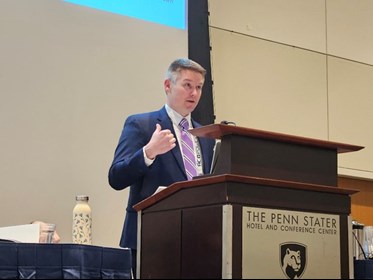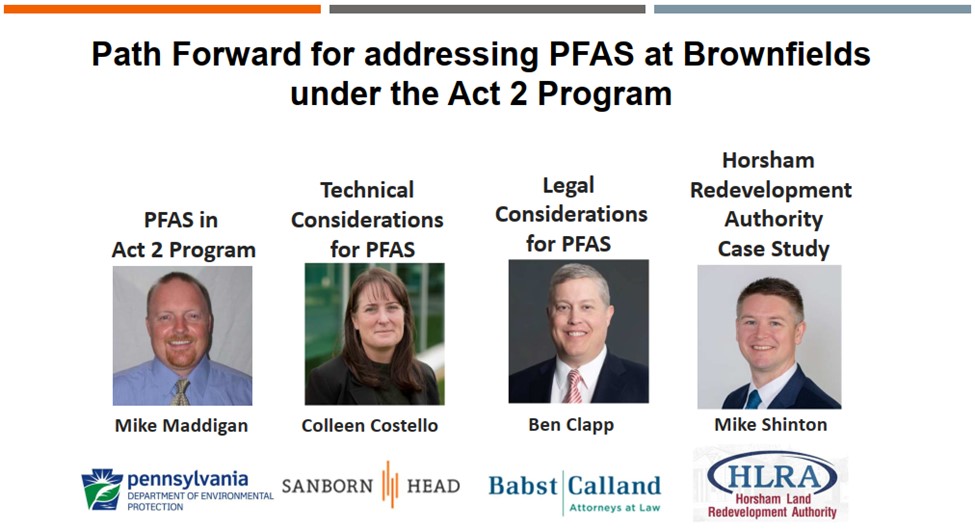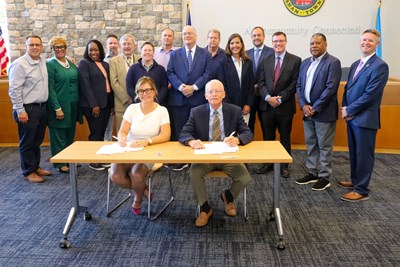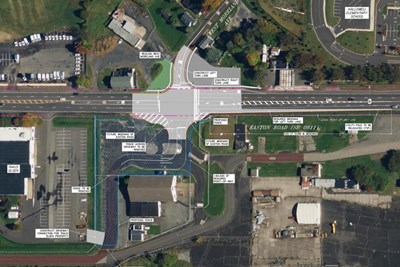Recent EPA Actions on PFAS
On April 10, 2024, the EPA published new drinking water regulations for six PFAS compounds. Most notably establishing maximum contaminant levels (MCLs) of 4 parts per trillion (ppt) for both PFOA and PFOS in drinking water. This standard is lower than the 14 ppt (PFOA) and 18 ppt (PFOS) MCLs established by Pennsylvania DEP in 2023. While this drinking water standard has limited direct impact on the base redevelopment, it sets the stage for the establishment of PFAS standards for groundwater, surface water and soils.
Additionally, on April 17, 2024, the EPA designated both PFOA and PFOS as CERCLA (Superfund Law) Hazardous Substances. This key designation moves PFOA and PFOS from "emerging contaminant" to "hazardous substance" designation. While the Navy has continued to proactively address PFAS contamination on the base, this change more concretely establishes the requirement for the Navy to include these PFAS substances in determining the necessary remediation for the property under CERCLA.
HLRA Board Chair William Whiteside stated that "these EPA actions are critical to providing the local communities protection under federal law and the HLRA will continue to monitor these developments to understand their impact on the base redevelopment".
As a reminder, in 2016, Horsham Township and the Horsham Water & Sewer Authority (HWSA) jointly adopted aggressive short and long term plans with a goal of reducing the average PFOS/PFOA concentrations over its entire water system to non-detect levels. The plans involved several steps including construction of filters on all of the HWSA water supply wells and interconnections. In early 2024, all steps were completed.
HLRA at PA Brownfields Conference

Attendees at the recent 2024 PA Brownfields Conference heard of the challenges facing the HLRA in redeveloping the former Naval Air Station – Joint Reserve Base, Willow Grove. Mike Shinton, HLRA Executive Director, participated in a panel discussion on the Path Forward for addressing PFAS at Brownfields under the Act 2 Program.
Pennsylvania's Land Recycling Program, commonly known at the Act 2 Program, is designed to promote the re-development of contaminated industrial and commercial properties in the Commonwealth. Act 2 establishes environmental remediation standards to provide a uniform framework for cleanups. Further development of brownfield properties stimulates economic growth, encourages local government partnerships with business, and utilizes as appropriate the existing infrastructure, thereby preserving prime farmland, open space and natural areas. The HLRA is committed to working with future developers to partner with PADEP on this critical aspect.

While the U.S. Navy continues to investigate and develop remediation strategies for the former base, the evolving nature of PFAS standards has to be factored into the redevelopment of NAS-JRB Willow Grove. Future developers will be interested in obtaining the liability relief afforded under PADEP's Act 2 as part of their redevelopment plan.



